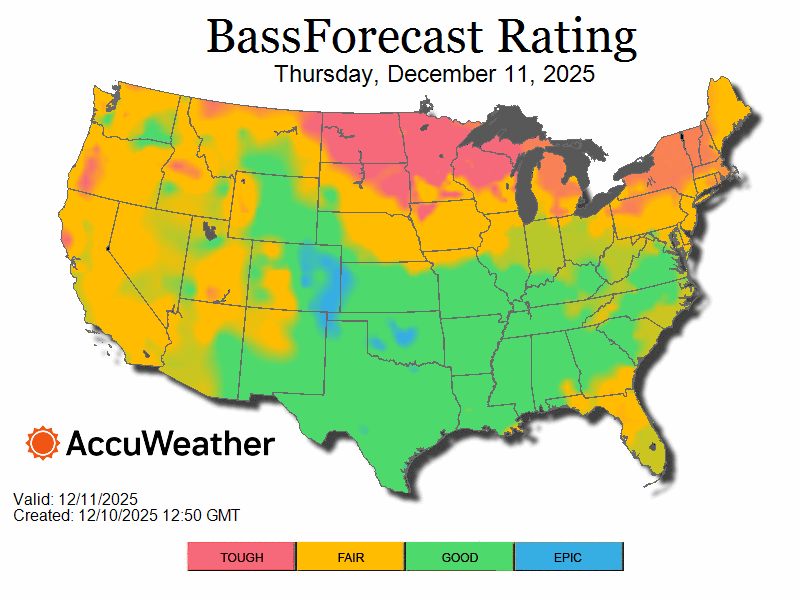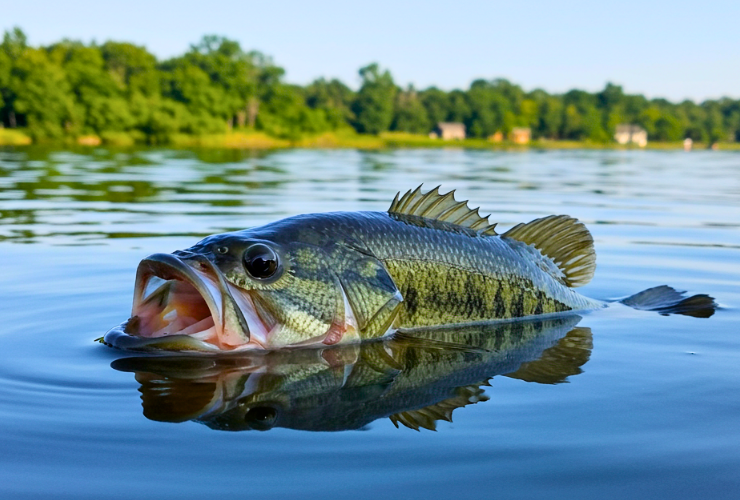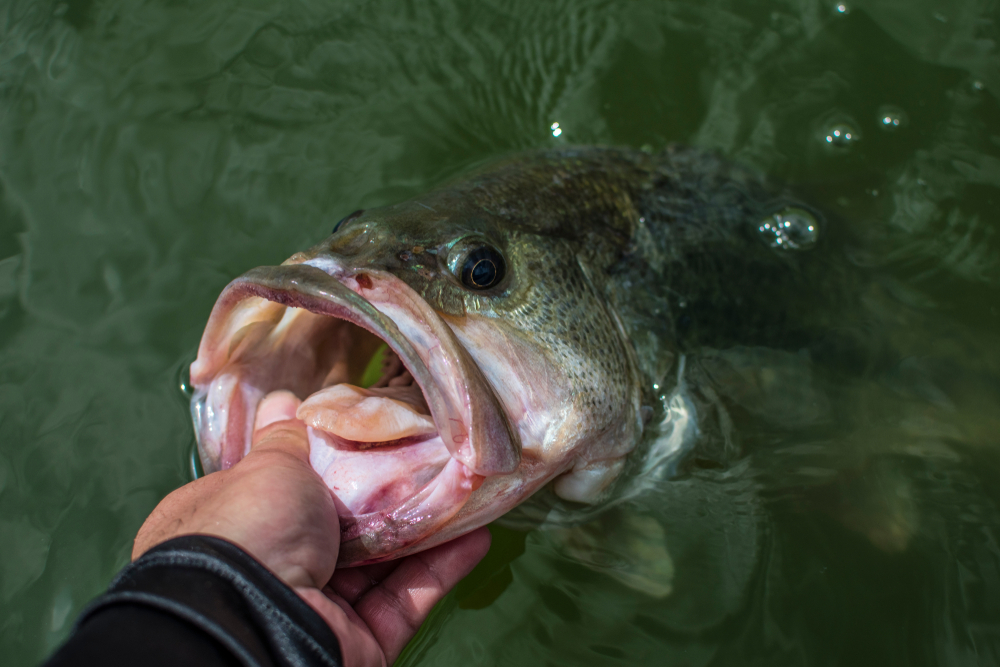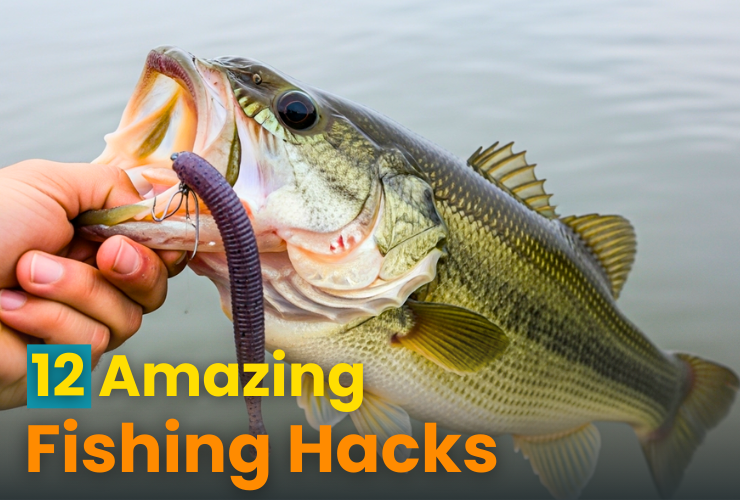Unmasking Lake Turnover: Decoding the Bass Fishing Enigma
Share this bass fishing article with every angler you know!
The Lake's Deep Breath:
Why Your Bass Fishing Spot Just Took a Hit
Every seasoned bass angler has felt it, that sudden, inexplicable shift in the lake, turning red-hot fishing into an ice-cold struggle. One moment, you are hauling them in, the next nothing. You just hit that wall. What gives? Is it you? The lure? The spot? Or is it something more profound at play?
Over the years we've watched it transform lakes and frustrate anglers. But understanding it isn't just about surviving; it's about thriving. Prepare to unlock the secrets, delve into the depths, and emerge a more enlightened angler. So, what is that weird smell on the lake, and why aren't the bass biting? I am talking about lake turnover, a mysterious but vital aquatic phenomenon.
Newsletter Signup
The Grand Mystery Solved:
What Exactly IS Lake Turnover?
Imagine your lake as a layered cake. Turnover is when that cake gets violently mixed. It's a natural, seasonal process driven by temperature, density, and a little help from the wind. This isn't some arcane magic; it's fundamental physics, played out on a grand scale.
What is fascinating is the unique dance of water itself. Unlike most substances, water is densest not when frozen, but at 39°F (4°C). This quirk dictates everything. During warmer months, the lake stratifies, forming distinct layers, each with its own character.
Meet the lake's layers (no, not an onion):
Epilimnion: The warm, oxygen-rich top layer where summer bass play. It's the sun-drenched surface, full of life.
Thermocline (Metalimnion): The critical "middle ground" where temperature and oxygen drop fast, often a bass highway in summer. This is where bass often suspend, finding the perfect balance of comfort and resources.
Hypolimnion: The cold, dense, often oxygen-depleted abyss below, a "dead zone" for most fish in summer. A place of refuge, perhaps, but often inhospitable.
This isn't just science jargon; it's the heartbeat of the lake. Turnover redistributes life-giving oxygen and essential nutrients, preventing year-round "dead zones." It's a restoration, a rebalancing of the aquatic ecosystem.
The Seasonal Shuffle:
When Does This Aquatic Roller Coaster Hit?
Most temperate lakes (like your favorite bass fisheries) are "dimictic," meaning they turn over twice a year. This rhythm dictates much of what we experience as anglers.
Fall Turnover (The Big One): As summer fades, surface water cools, becoming denser. This denser water sinks, pushing up warmer, lighter water. It's like a slow-motion vertical current. Wind helps erode the thermocline until the lake's temperature and density are uniform. Signs of this include Murky, off-colored water (pea-green, brownish, milky), floating debris, a pungent "rotten egg" or sulfurous smell, and small bubbles rising from the bottom. The timing varies by latitude – could be September up north, as late as January down south.
Winter Stratification: A "reverse" stratification forms under ice, with 39°F water at the bottom. This creates a relatively stable environment for fish beneath the frozen surface.
Spring Turnover (The Freshen Up): As ice melts, surface water warms toward 39°F. Sinking water, aided by spring winds, creates another, often less dramatic, mixing event. This replenishes oxygen after winter's isolation, preparing for summer. It's a rebirth, a reawakening of the lake.
It's crucial to remember that not all lakes turn over drastically. Shallow lakes mix often. Big, river-fed systems or those with constant inflow can be less affected, or act differently. Rivers generally don't stratify. Each lake has its own personality, its own unique way of breathing.
A Glimpse Back:
How We Figured This Whole Thing Out (Historical Perspective)
Limnology, the science of inland waters, isn't new. Early pioneers like Hoppe-Seyler (1896, Lake Constance) and Birge & Juday (1911) laid the groundwork, observing oxygen and stratification. These were the first glimpses into the hidden world beneath the surface.
Decades of research through the 20th century deepened our understanding, linking physical changes to everything from plankton blooms to fish behavior. Long-term data (Lake Zurich since 1937) continues to reveal subtle shifts in lake dynamics. This accumulation of knowledge has allowed us to understand the intricate web of life within a lake.
This isn't just academic; it's the foundation of every good fishing report and every strategy you've ever learned about seasonal bass patterns. It shows us how interconnected everything in a lake truly is. We stand on the shoulders of giants, building upon their insights.
The Bass Angler's "Headache":
How Turnover Messes with Bass (and Your Day)
Imagine someone suddenly shaking up your house, flooding your basement with bad air, and moving all the furniture. That's turnover for a bass. They become stressed, disoriented, and lethargic. It disrupts their established routines, their comfort zones.
The stable thermocline that concentrated bass (especially deep-water fish) vanishes. Oxygen and temperature are now uniform. Bass are no longer restricted by depth and can roam anywhere. This is why they become so hard to pattern and pinpoint. They're literally "scattered."
Some say cooler temps post-turnover boost metabolism, making bass aggressive. Others (my 30 years included) find oxygen depletion and stress often make them less willing to bite during the active mixing. It's often a short period of struggle before the post-turnover "fall feed" kicks in.
Largemouth: Adapt quicker, often move shallower to escape the thick of it.
Smallmouth: Can be more sensitive to oxygen changes. Often deep, structurally oriented, but will move to deep wintering areas post-turnover, becoming easier to find.
Spotted Bass: Also scatter and can be found suspended or near reefs, following baitfish.
Murky water impacts visibility for both bass and baitfish, making lure presentation tougher. Release of sulfurous gases isn't pleasant for anyone. It's a cascade of challenges, testing the angler's skill and patience.
Turnover Tales:
Separating Fact from Fishing Fiction
(Controversies & Misconceptions)
Myth #1: Bass Stop Biting Entirely. Truth: Not true! They still need to eat, but they're disoriented. You just have to work harder and smarter.
Myth #2: Turnover Always Causes Massive Fish Kills. Truth: Rare in large, healthy lakes. More likely in smaller, shallower, or nutrient-rich bodies of water with severe oxygen depletion. Large lakes offer escape routes.
Myth #3: Turnover Lasts for Weeks and Weeks. Truth: The active mixing is usually days to a couple of weeks. Full stabilization might take longer, but the toughest fishing window is generally shorter.
Myth #4: All Lakes Turn Over the Same Way. Truth: Nope! Shallow, river-fed, or certain reservoir types may not stratify or turn over drastically.
It's a commonly dreaded period, but by understanding the science, you can shift from dread to strategic adaptation. It's about finding those brief windows or unaffected zones. Knowledge is power, and dispelling these myths empowers us to fish more effectively.
Your Playbook: Conquering the Turnover Crunch
Become your personal turnover detector:
See It: Murky water, floating "trash" (organic debris), oil-slick film.
Smell It: That unmistakable "rotten egg" scent.
Feel It: Check water temps at different depths (fish finders help!). If it's uniform top to bottom, you're in it.
Observe It: Lack of baitfish activity, or bass acting "weird."
Then, try these strategies:
Run from the Turnover (When Possible!): In large reservoirs, turnover can be localized. If the upper end is trashed, run to the dam, or vice-versa. Find that "stable water."
Go Shallow (Our Go-To): Shallow water (0-5 feet) is often less affected by the deep mixing. Bass (even deep ones) may push shallower to escape. Use power fishing tactics like square bill crankbaits (bang 'em off cover!), spinnerbaits (big thumping Colorado blades, white/chartreuse for murky water), and buzzbaits. Target wind-blown banks, shallow grass lines, docks, and laydowns.
Embrace the Current: Moving water mixes naturally, maintaining better oxygen and stability. Focus on feeder creeks, river arms with inflow, bridge funnels, and dam outflows.
Hunt for Isolated & Vertical Cover: Bass need comfort. A single dock, a lone laydown, or a bluff bank provides refuge. Look for bridge pilings and steep drop-offs along old creek channels. Bass can move up/down easily without covering much horizontal distance.
Slow Down & Finesse (But Not Always!): If power fishing isn't working, try slowing down. Jigging heavy jigs (football heads) on hard bottoms or vertical drops. Use dark-colored jigs (black and chartreuse), smaller worms, and creature baits worked methodically.
Turnover demands a flexible mindset. Keep moving, keep changing, and trust your instincts. The bite will turn back on!
The Long Game:
Climate Change and the Future of Bass Fishing
Rising air and water temperatures are altering lake dynamics globally. Stronger, longer stratification means less thorough turnover. Bass on the move, warm-water species like largemouth and smallmouth are expanding their ranges northward. This expansion can impact native cold-water species (like trout), creating competition and predation issues. Climate change can shift turnover timing, impacting nutrient cycling and potentially leading to more algal blooms.
Fisheries managers are exploring "adaptive management" – monitoring populations, modifying regulations, and even rethinking stocking practices. Sometimes, it means accepting that some lakes will become bass havens.
Understanding these macro changes helps you anticipate future shifts in your favorite fisheries. Local fishery management remains crucial. We must be stewards of these resources, advocating for responsible practices.
Conclusion:
The Ever-Changing Lake, the Ever-Adapting Angler
Lake turnover isn't a curse; it's a fundamental part of a lake's health. It's a challenge, but a predictable one, if you know what to look for. Armed with this knowledge, you're not just an angler; you're a limnologist with a rod in hand. Embrace the learning, sharpen your skills, and let every "tough bite" be a lesson.
What are your favorite turnover tactics? Share your hard-earned wisdom in the comments below, and let's keep learning together!
Our Bass Forecast app delivers the bass fishing intel: Hyper-local forecasts, structure scans, bait patterns for all bodies of water, all updated real-time for 2025 conditions and beyond. A field-tested fave by over a million anglers, this is your cheat code to hit honey holes untouched.
Download it now, plot your Personal Best path, and watch your averages soar to legendary.









.png)
.png)